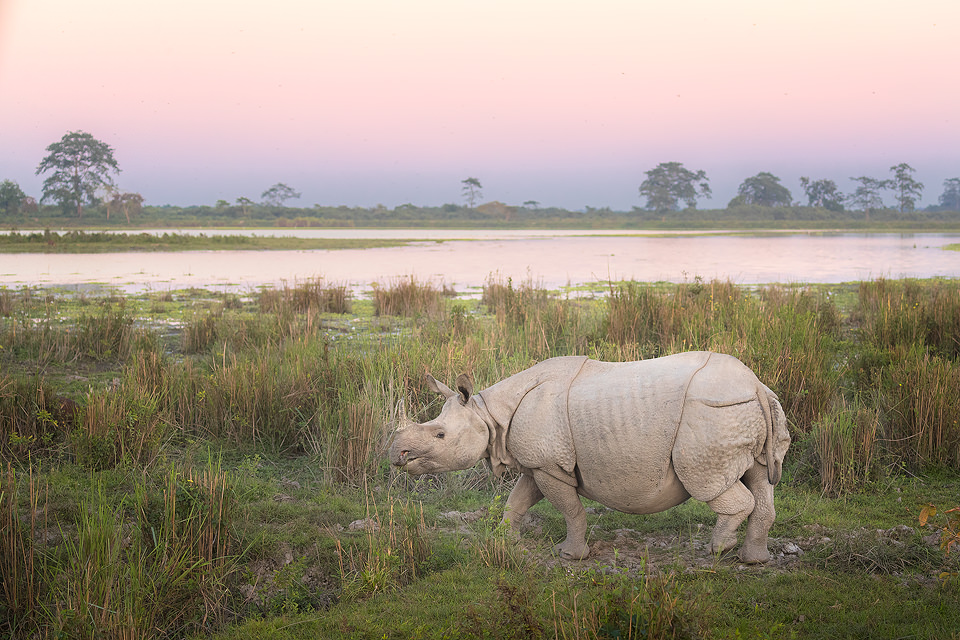Indian rhino at sunset
Indian rhinoceros, shown in wetland habitat at sunset, Assam, India. Thanks to their enormous size and thick armour-like hide, rhinos have no natural predators. Despite this they are notoriously grumpy and easily spooked. When they feel threatened they tend to charge directly at whatever has scared them!
About the Indian rhinoceros:
The Greater one-horned rhinoceros (Rhinoceros unicornis) also known as the Indian rhinoceros , and the great Indian rhinoceros, is a species of rhino native to the Indian subcontinent.
The greater one-horned rhino is the largest of the rhino species, a title shared with the African White Rhinoceros. Indian rhinoceros’ were once widespread across much of the Indian sub-continent, but as the human population increased, the rhino population grew close to extinction after excessive hunting and conflict with local farmers. By the start of the 20th century, it was estimated that just 200 greater one-horned rhinos remained in the wild.
The incredible recovery of the greater one-horned rhino from the brink of extinction is one of the greatest conservation success stories in the world. Through strict protection from poaching and land management by wildlife authorities, the great Indian rhinoceros was brought back from the almost certain extinction. Today the population is estimated at 3,500 rhinos, found in northeastern India and the grasslands of Nepal, particularly in Kaziranga National Park and Chitwan.
These giants can be identified by their single horns, which can grow up to about 25 inches long. Their thick grey hide with deep skin folds, makes them look as though they are wearing a suit of armour.
You can find out more about Greater one-horned rhinos here.
